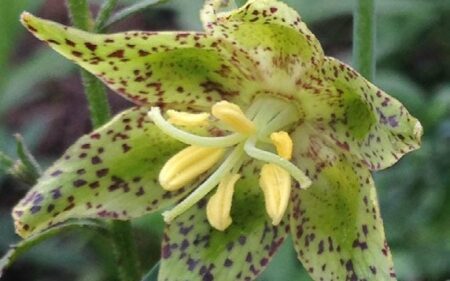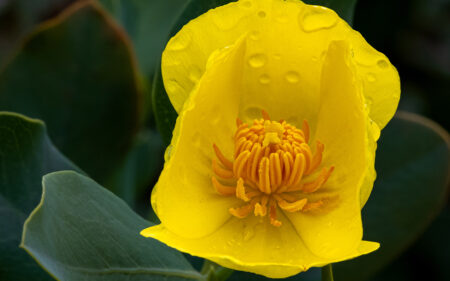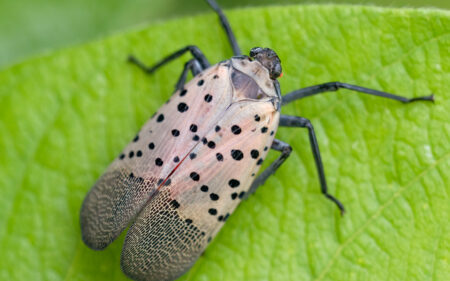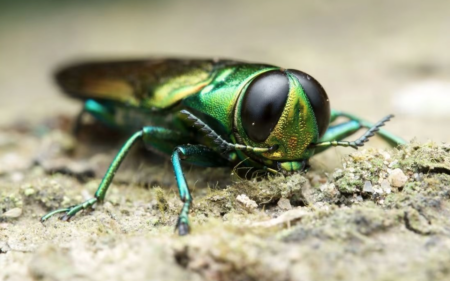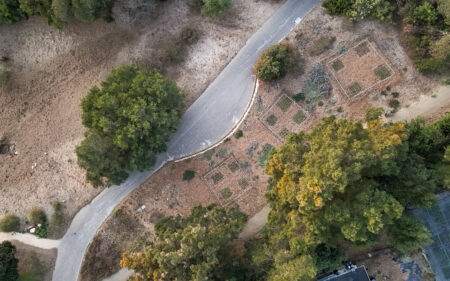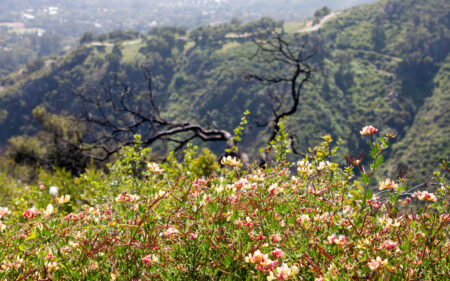Salvar el palo de hierro de Catalina
El personal de Horticultura del Jardín y los voluntarios pasaron cinco días en la isla de Catalina recogiendo semillas del palo de hierro de Catalina. Este árbol no se encuentra en ningún otro lugar del planeta y su conservación es muy preocupante debido a nuestro clima cambiante. Visitamos 25 de las 110 arboledas que se calcula que hay en la isla y pudimos recoger frutos de 19 de ellas.

El palo de hierro isleño (Lyonothamnus floribundus), que sólo se encuentra en las Islas del Canal, es uno de los árboles más raros de California. Existen dos subespecies: la forma más conocida de la isla de Santa Cruz (L. f. ssp. asplenifolius), que tiene hojas parecidas a las del helecho y se encuentra en tres de las islas del Canal del Norte, y la forma de la isla de Catalina (L. f. ssp. floribundus), que tiene hojas enteras y sólo se encuentra en la isla de Catalina. El registro fósil revela que, hace unos 10 millones de años, el lionothamus estaba muy extendido en el oeste de Norteamérica, cuando el clima era más frío y húmedo. En la actualidad, el lionothamus se reduce a un estrecho rango de hábitats en sus refugios insulares: principalmente en laderas costeras frescas orientadas al norte, a menudo a lo largo de pequeñas fallas donde tienen mayor acceso al agua, y en sitios con drenaje de aire frío.

En la isla Catalina, los árboles se encuentran en pequeñas arboledas, en las que todos los troncos de una arboleda son clones que representan a un único individuo genético. Las arboledas se crean a lo largo de miles de años, ya que los palos de hierro se extienden muy lentamente por medio de la brotación de tocones, que se produce cuando los tocones de los árboles en el suelo o los tocones de las ramas eliminadas se regeneran en nuevos árboles. Sólo quedan unas 110 arboledas de palo de hierro de Catalina, básicamente sólo 110 plantas individuales. Dado que el palo de hierro produce muy pocas semillas viables en la naturaleza, es extremadamente inusual encontrar plántulas en las islas.

Todos estos factores se combinan para hacer que el palo de hierro de Catalina sea muy vulnerable a las amenazas medioambientales, como el fuego, el pisoteo y el ramoneo por parte de los animales asilvestrados, y el cambio climático. Con la financiación del Proyecto de Conservación Genética de los Árboles, el Jardín se ha embarcado en los esfuerzos para propagar el palo de hierro de Catalina y establecer una colección de conservación que represente toda la diversidad genética de la subespecie. El personal de horticultura visitó 29 arboledas este año, recogiendo esquejes (en primavera) y frutos (en otoño). Por desgracia, los esquejes fracasaron, lo que no era de esperar, ya que no suelen cultivarse a partir de esquejes. Tenemos previsto probar otros tratamientos y técnicas a lo largo del año que viene para ver si podemos desarrollar un método exitoso para conseguir que los esquejes enraícen.
El personal del jardín, dirigido por Betsy Lape, Coordinadora de Colecciones Vivas, trepó por un terreno muy accidentado y escarpado para recoger los frutos de 20 arboledas, nueve de las cuales no habían florecido este año. Recogimos bolsas de fruta -todas las que pudimos alcanzar- con la esperanza de obtener algunas semillas viables. Los frutos se secaron, se limpiaron y se clasificaron cuidadosamente para encontrar semillas. Intentaremos germinar las semillas que encontremos. Las plantas que resulten de nuestros esfuerzos se plantarán en el jardín y se distribuirán a los socios del jardín en el norte de California para establecer colecciones satélite.
 Donar
Donar